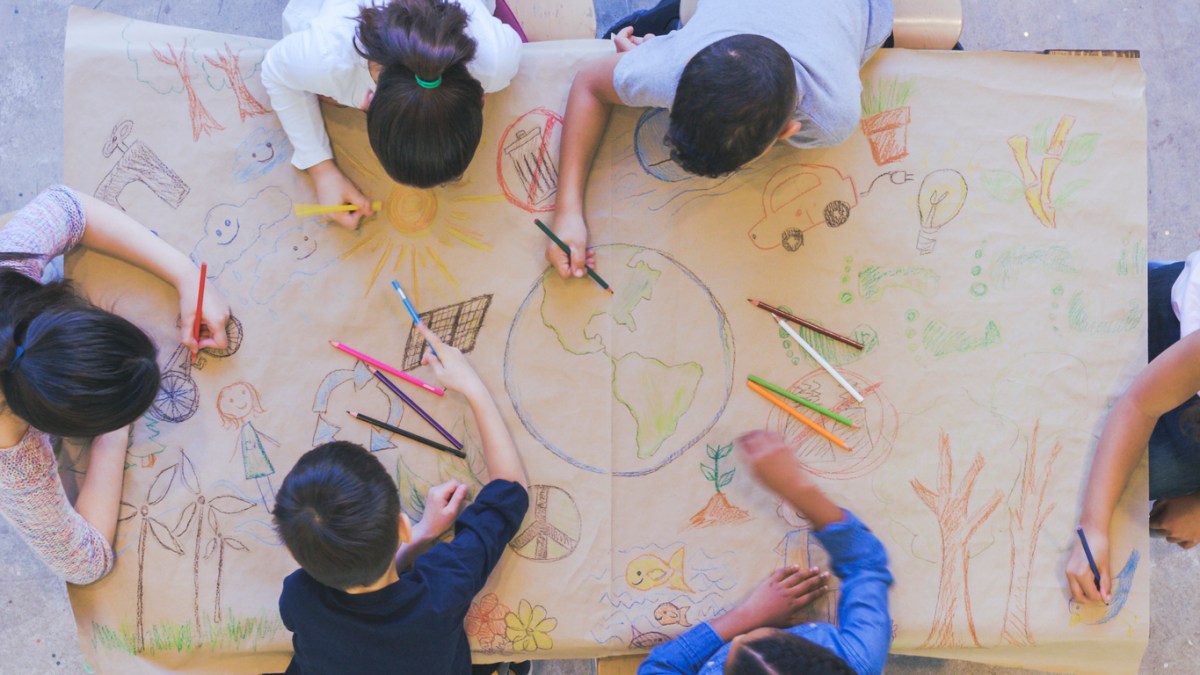The ecosystem platform isn’t offering sign-ups yet, but it’s already getting attention from teachers and students who are excited to learn about sustainability, and environmental issues, but also to take practical action themselves. Part EdTech, part awards platform, ecosystem is looking to to make saving the planet accessible to a highly-engaged youth market, using a gamified digital interface.
Founder Jon Owen has been testing the platform relentlessly, speaking to schools and students all over the county, to ready the project for a nation-wide launch.
“A key element is the B2B platform for the schools. It’s a series of lesson plans, and lesson outlines, as well as some activities and content, and most importantly it’s all curriculum aligned. We’re actually going to be introducing core subject areas as well, like english and maths, and the sciences. What we’re finding is the teacher’s timetable is already so busy, for them to introduce a strictly ‘sustainability’ lesson is going to be a bit of a hard sell for them.” Jon Owen says.
The platform offers teachers a plethora of modules to teach students about a whole range of sustainability issues, but it’s done as a backdrop for regular lessons.
“If you get your mum and dad to change their electricity over to a green provider, there’s a maths lesson there, you can calculate what your costs are, and when your tariff changes, how much you can actually save. And then there’s English lessons, learning about creative writing, but also persuasive writing. So we’re bringing sustainability into the core curriculum.” Jon says.
The issue of sustainability isn’t confined to a subject like science, it can impact all aspects of our lives, and it’s refreshing to hear that school curriculums are starting to recognize this.
“Sustainability is what they call a cross-curriculum priority, so you’re supposed to cover it in all elements of the curriculum. It’s a lot easier in high school, because the subject, texts, and the resource materials are more clearly defined.” Jon says.
“But in primary school, it’s very much up to the teacher. So if they’re passionate about the environment, you’ll find it crops up a lot. And if they don’t really care, and they’ve got enough going on, it tends to just slip by, so what we want to do is formalise it in primary school to make it easier for the teachers to introduce it.”
The company is determined to bring all students along on the journey, so they’re offering lessons suitable across all age brackets, from years K to 12.
“It is a massive age band, and there’s huge variability, high school students are a different species. So we’re aware the brand has to evolve, the content has to evolve, the level of complexity has to evolve.” Jon Says.
“In every year we’ve got sub brands for each year, we use four elements to represent each group. So K to year one is earth, and the awards at that stage is called sapling, and then they get slightly more edgier as they go up to wind and water, and then fire is the final element. By the age of 15 and 16 the awards are classed as guardian and warrior.” Jon says.
“In terms of content and themes, every year is broken down into four modules. And those four are always the same: causes of climate change, waste reduction, threatened species and environment. They’re the four modules that carry all the way through the platform. It’s focussed on just getting up to speed on the issues and learning a bit about the theory and promoting critical thinking around that.”
For readers who have children, you’ll understand that they’re growing up very fast these days. The internet gives them access to everything, all the time, and while it can be overwhelming, it can also be harnessed and nudged in a positive direction.
This is why ecosystem is also introducing a B2C channel, where children and their families can undertake small tasks of sustainability, all of which are measurable and rewarded, ecosystem calls this ‘celebrating the wins’. The idea is to provide children with the means to become more environmentally aware, engaged and active.
“This is part of the real driver for this, they’re smart, they know something’s going on, they want to help, they just don’t have the access to it. So we’re going to provide them with a simple, fun way to get involved. And that’s really what’s going to drive this journey for them.” Jon says.
Jon is currently open to interest from potential investors. He recognises the impact potential of the platform, and the native ability for it to measure impact.
“We quantify things like plastic reduction on projects. If it’s taking soft plastics to woolies to get it recycled, there’s a carbon footprint to that, there’s a waste reduction impact point allocated to the individual. If you get your mom and dad to change their electricity over, there’s a huge potential carbon footprint saving there. So we’re allocating savings to every single task, and as you complete the task that gets recognised in your record, so each child will have this impact statement. It then gets aggregated up the chain. The schools will record a total, the class can have one, the school can have one, and then the state will have one. We’ll then report the data up to the government, that’s the ideal scenario.” Jon says.

